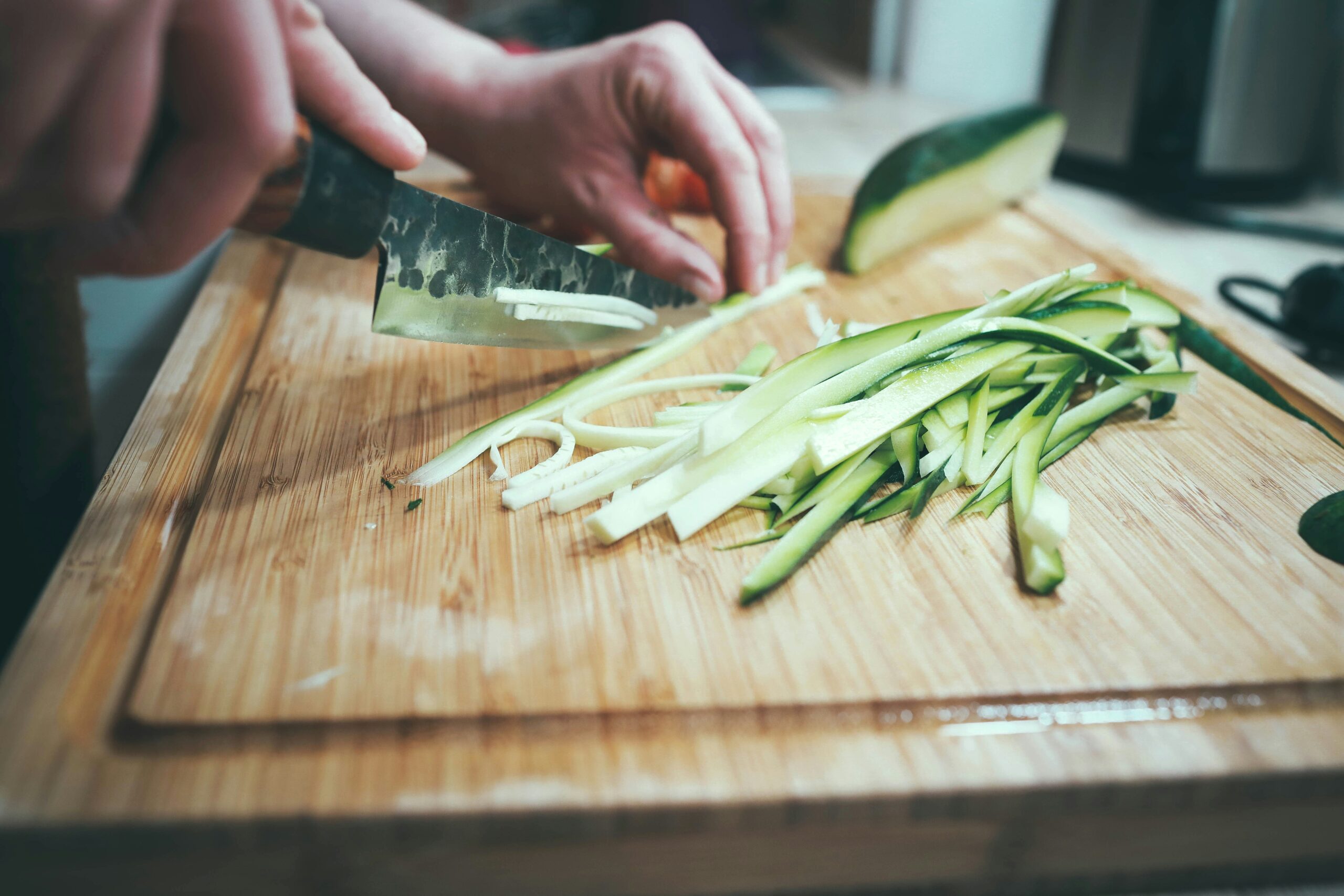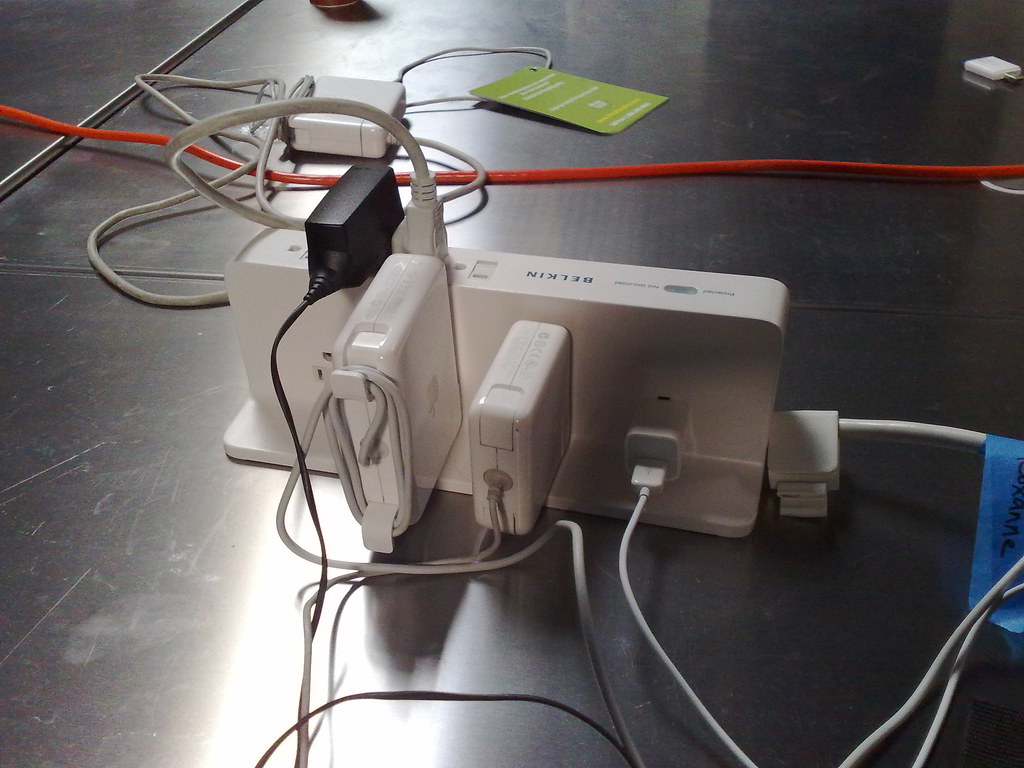Wood cutting boards are a staple in many kitchens due to their durability, aesthetic appeal, and natural antibacterial properties. However, they require specific care and maintenance to ensure they remain in good condition and safe for food preparation. This guide will walk you through how to clean and care for wood cutting boards, covering daily cleaning routines, deep cleaning, sanitizing, and maintaining the board’s integrity over time.
Table of Contents
ToggleHow To Clean And Care For Wood Cutting Boards – Daily Cleaning Routine
1. Rinse Immediately After Use
One of the most important habits to develop is rinsing your cutting board immediately after use. This helps prevent food particles and juices from soaking into the wood, which can lead to stains, odors, and bacterial growth.
- Steps:
- Scrape off any food scraps into the trash or compost.
- Rinse the board under warm running water.
- Use a dish brush or sponge to gently scrub the surface, removing any remaining food particles.
2. Use Mild Dish Soap
While some people might shy away from using soap on their wood cutting boards, mild dish soap is safe and effective for daily cleaning.
- Steps:
- Apply a small amount of mild dish soap to your dish brush or sponge.
- Scrub the cutting board in circular motions, paying special attention to areas with food residue.
- Rinse thoroughly with warm water to remove all soap.
3. Dry Immediately
Wood cutting boards should never be left to air dry on the counter. Prolonged exposure to moisture can cause the wood to warp, crack, or develop mold.
- Steps:
- Use a clean, dry cloth or paper towel to pat the cutting board dry.
- Stand the board upright or on its edge to allow any remaining moisture to evaporate.
Deep Cleaning
Even with regular cleaning, wood cutting boards require deep cleaning periodically to remove stains and odors and ensure they remain hygienic.
1. Salt and Lemon Scrub
A natural and effective method for deep cleaning involves using coarse salt and lemon.
- Steps:
- Sprinkle coarse salt generously over the surface of the cutting board.
- Cut a lemon in half and use the cut side to scrub the salt into the board, squeezing the lemon gently to release the juice.
- Scrub in circular motions, covering the entire surface of the board.
- Let the mixture sit for a few minutes to penetrate stains and odors.
- Rinse thoroughly with warm water and dry immediately.
2. Baking Soda Paste
Baking soda is another excellent natural cleaner that can help remove tough stains and odors.
- Steps:
- Make a paste by mixing baking soda with a small amount of water.
- Apply the paste to the cutting board, focusing on stained or discolored areas.
- Use a scrub brush or sponge to scrub the paste into the wood.
- Rinse thoroughly with warm water and dry immediately.
3. Vinegar Solution
White vinegar is known for its antibacterial properties and can be used to sanitize your cutting board.
- Steps:
- Mix equal parts white vinegar and water in a spray bottle.
- Spray the solution generously over the cutting board.
- Let it sit for a few minutes to kill bacteria and neutralize odors.
- Wipe the board with a clean, damp cloth and dry immediately.
Sanitizing
Regular sanitizing is crucial to prevent bacterial growth, especially if you use your cutting board for raw meat, poultry, or seafood.
1. Hydrogen Peroxide
Hydrogen peroxide is a powerful disinfectant that can help sanitize your cutting board.
- Steps:
- Pour 3% hydrogen peroxide directly onto the cutting board.
- Use a clean cloth or sponge to spread the peroxide over the entire surface.
- Let it sit for a few minutes to kill bacteria.
- Rinse thoroughly with warm water and dry immediately.
2. Bleach Solution
A diluted bleach solution is effective for sanitizing wood cutting boards but should be used sparingly to avoid damaging the wood.
- Steps:
- Mix one teaspoon of bleach with one quart of water.
- Apply the solution to the cutting board using a clean cloth or sponge.
- Let it sit for a few minutes to disinfect the board.
- Rinse thoroughly with warm water and dry immediately.
Maintenance and Care
Proper maintenance is essential to prolong the life of your wood cutting board and keep it in optimal condition.
1. Oiling
Regularly oiling your wood cutting board helps maintain its moisture balance, preventing it from drying out, cracking, or warping.
- Steps:
- Choose a food-grade mineral oil or a specialized cutting board oil.
- Pour a small amount of oil onto the cutting board.
- Use a clean cloth or paper towel to spread the oil evenly over the surface, including the edges.
- Let the oil soak in for a few hours or overnight.
- Wipe off any excess oil with a clean cloth before using the board.
2. Waxing
Waxing provides an additional layer of protection, sealing the wood and keeping moisture and bacteria out.
- Steps:
- Choose a food-safe cutting board wax, often made from beeswax and mineral oil.
- Apply a small amount of wax to the cutting board using a clean cloth.
- Rub the wax into the wood in circular motions, covering the entire surface.
- Let the wax sit for a few minutes to penetrate the wood.
- Buff the board with a clean cloth to remove any excess wax and create a smooth finish.
3. Avoiding Extremes
To keep your wood cutting board in good condition, avoid exposing it to extreme temperatures or prolonged moisture.
- Tips:
- Never put your wood cutting board in the dishwasher, as the high heat and water can cause it to warp and crack.
- Avoid soaking the board in water or leaving it in a wet sink.
- Store the cutting board in a dry, well-ventilated area to prevent moisture buildup.
Repairing Your Cutting Board
Over time, your cutting board may develop small cracks, gouges, or other signs of wear. With proper care and a few simple techniques, you can repair minor damage and extend the life of your board.
1. Sanding
Sanding is an effective way to remove surface stains, scratches, and small gouges, restoring the smoothness of your cutting board.
- Steps:
- Use medium-grit sandpaper (around 120-grit) to sand the surface of the cutting board.
- Sand in the direction of the wood grain to avoid creating new scratches.
- For deeper scratches or gouges, start with a coarser grit (80-grit) and gradually move to finer grits.
- After sanding, wipe the board with a damp cloth to remove any dust.
- Reapply mineral oil or cutting board oil to restore moisture and protect the wood.
2. Filling Cracks
Small cracks in your cutting board can be filled to prevent them from expanding and harboring bacteria.
- Steps:
- Use food-safe wood filler or a mixture of sawdust and wood glue.
- Apply the filler to the crack, using a putty knife to press it into the wood.
- Let the filler dry completely, following the manufacturer’s instructions.
- Sand the repaired area until smooth, and reapply oil to the entire board.
Preventing Damage
Preventing damage is easier and more effective than repairing it. Here are some tips to help you maintain the integrity of your wood cutting board:
1. Use Both Sides
To prevent uneven wear, use both sides of your cutting board. This helps distribute the impact of cutting and reduces the risk of warping.
2. Avoid Heavy Chopping
While wood cutting boards are durable, avoid using them for heavy chopping or cleaving tasks. Instead, use a separate butcher block or plastic cutting board for these tasks to prevent deep gouges in your wood board.
3. Use a Board Mat
Place a non-slip mat or damp towel under your cutting board to prevent it from sliding during use. This reduces the risk of accidental cuts and damage to the board.
Special Considerations
Different types of wood and cutting board designs may require specific care techniques. Here are some special considerations for various wood cutting boards:
1. End-Grain Cutting Boards
End-grain cutting boards are made by arranging the wood so that the ends of the grain face up. These boards are highly durable and self-healing but require regular maintenance.
- Care Tips:
- Follow the same cleaning, oiling, and waxing routines as for other wood cutting boards.
- Sand and fill any cracks or deep gouges as needed.
2. Bamboo Cutting Boards
Bamboo cutting boards are an eco-friendly alternative to traditional wood boards. While they are durable, they can be more prone to cracking if not cared for properly.
- Care Tips:
- Avoid soaking bamboo cutting boards in water, as this can cause the bamboo to swell and crack.
- Use mineral oil or bamboo-specific oil to keep the board hydrated.
- Follow regular cleaning and sanitizing routines to prevent bacterial growth.
3. Heirloom Cutting Boards
Heirloom cutting boards, often passed down through generations, may require extra care to preserve their historical and sentimental value.
- Care Tips:
- Handle heirloom boards with care, avoiding heavy chopping or cutting tasks.
- Use mild cleaning methods and avoid harsh chemicals or abrasive cleaners.
- Regularly oil and wax the board to maintain its appearance and integrity.
FAQ’s on How To Clean And Care For Wood Cutting Boards
How often should I clean my wood cutting board?
It’s essential to clean your wood cutting board after every use. Rinse it with warm water, use mild dish soap, and dry it immediately to prevent moisture damage and bacterial growth. For daily use, this routine ensures that your cutting board stays hygienic and in good condition.
How do I remove stains and odors from my wood cutting board?
To remove stains and odors, you can use a natural scrub made from coarse salt and lemon. Sprinkle the salt over the board, scrub with a halved lemon, let it sit for a few minutes, then rinse with warm water and dry. Alternatively, you can use a baking soda paste or a vinegar solution for deep cleaning.
Can I put my wood cutting board in the dishwasher?
No, you should never put a wood cutting board in the dishwasher. The high heat and prolonged exposure to water can cause the wood to warp, crack, and deteriorate. Always hand wash your wood cutting board and dry it immediately.
How often should I oil my wood cutting board?
Oiling your wood cutting board every 3-4 weeks is a good practice to maintain its moisture balance and prevent it from drying out and cracking. Use a food-grade mineral oil or a specialized cutting board oil, apply it evenly, and let it soak in overnight. Wipe off any excess oil before using the board again.
What should I do if my wood cutting board develops cracks or gouges?
If your cutting board develops cracks or gouges, you can repair them by sanding the surface and using food-safe wood filler. Sand in the direction of the grain, fill the cracks, let the filler dry, and sand again until smooth. Reapply mineral oil to restore moisture and protect the wood.
How can I prevent my wood cutting board from warping?
To prevent warping, avoid exposing your wood cutting board to extreme temperatures and prolonged moisture. Always dry the board immediately after cleaning, store it in a dry, well-ventilated area, and use both sides of the board to ensure even wear. Additionally, avoid heavy chopping tasks that can damage the board.
Conclusion on How To Clean And Care For Wood Cutting Boards
Proper cleaning and care of wood cutting boards are essential to ensure their longevity, functionality, and safety in the kitchen. By following a regular cleaning routine, deep cleaning periodically, sanitizing, and maintaining the board’s moisture balance, you can keep your wood cutting board in excellent condition for years to come. Whether you have a standard wood board, an end-grain board, or a cherished heirloom, these care tips will help you enjoy the beauty and utility of your wood cutting board while keeping it safe for food preparation.


